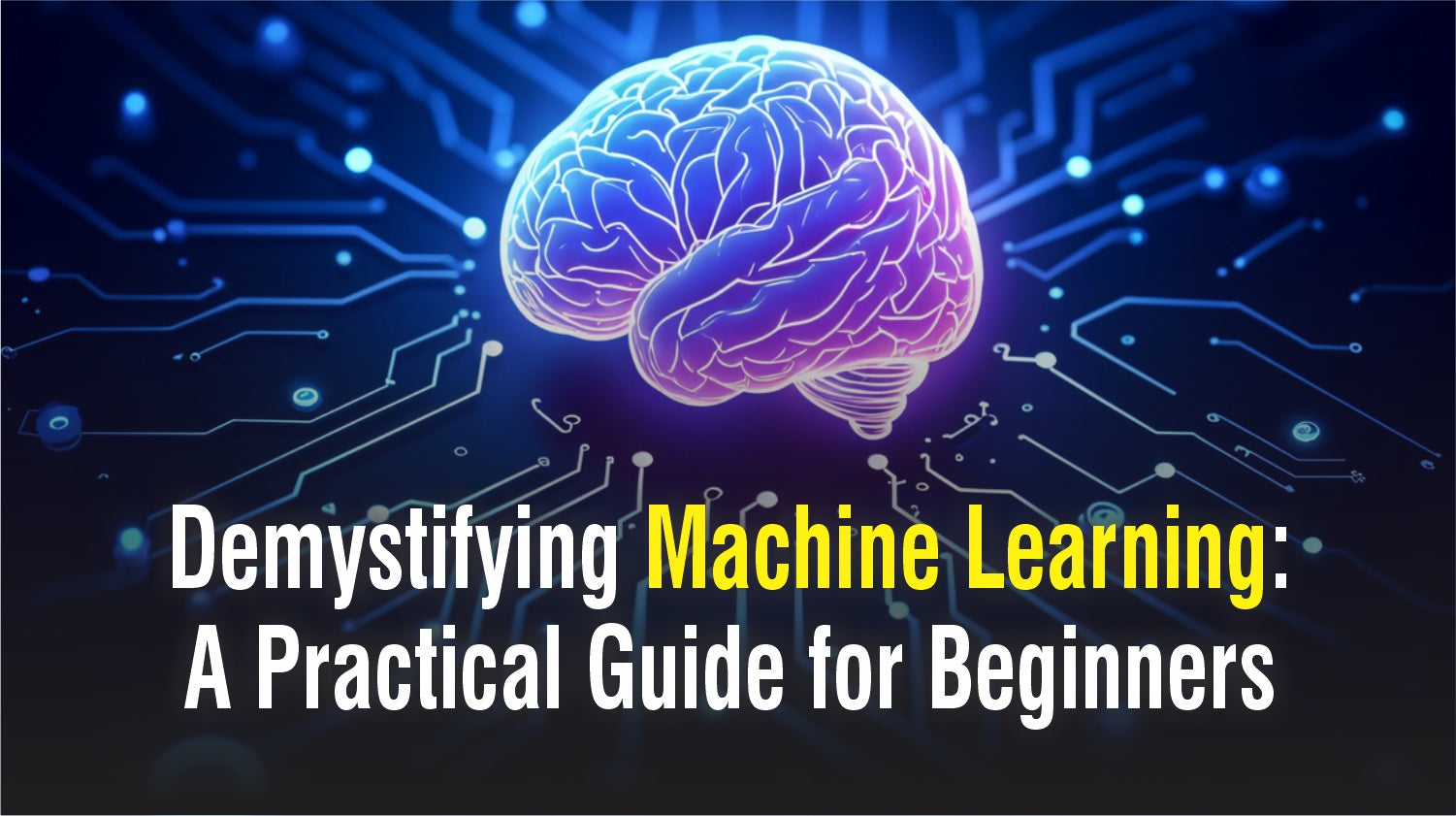Blogs On Programming

What Is Business Analytics? Definition, Benefits, Trends, and Career Skills
on May 18 2025
In today’s fast-paced business world, staying ahead of the competition demands more than intuition and experience. Organizations must harness the power of data to make informed, strategic decisions. Here’s where business analytics enters—the game-changer that is transforming decision-making across industries.
From improving customer experience to optimizing supply chain efficiency, business analytics is no longer a luxury; it's a necessity for survival in a data-driven economy. The integration of artificial intelligence (AI) and machine learning (ML) has further expanded the potential of analytics, making it possible to automate complex decision-making processes and generate real-time insights. This blog takes a look at the specifics of the wide and ever-evolving field of business analytics.
What is Business Analytics?
Business analytics is defined as the use of data collection and analysis to support business decisions. It encompasses a variety of applications, including basic descriptive analytics and complex predictive and prescriptive models. These tools help businesses to progress from a best guess to a decision that is backed by data and, thus, is more accurate and effective. The figure below shows the three types of business analytics.
Three types of business analytics
Importance of Business Analytics
You cannot overemphasize the importance of business analytics in the current world we live in. Data-based decisions lessen the element of risk, enabling organizations to move forward with caution. For instance, a company can employ analytics to determine the most lucrative markets or the most profitable products.
Analyses also assist organizations in determining where they are performing poorly, where they can improve their processes, and cut down on costs. Predictive maintenance is also possible in manufacturing, which can lead to reduced downtime and the cost of repairs. Furthermore, businesses can know what their customers are likely to want or need and, in turn, provide them with what they want or need to keep them coming back.
All the companies that use advanced analytics perform better than their competitors in terms of revenue and profitability.
It is also important to note that predictive analytics is used in risk management, and organizations can use it to identify potential risks such as market risks, risks posed by the supply chain, and come up with preventive measures. Moreover, analysis is critical for sustainability and ESG (environmental, social, and governance) activities, which allow companies to measure and enhance their performance in these areas.
Real-Life Applications of Business Analytics
Business analytics is not just a concept in a textbook—it is changing how businesses work in the real world. Some of the real-life applications of business analytics are shown in the image below.
How different industries benefit from business analytics in real-world application.
Emerging Trends in Business Analytics
With the advancement in technology, the field of business analytics is also changing. Let’s take a look at some of the emerging trends in Business Analytics:
Augmented analytics:
Augmented analytics, enabled by AI, automates data understanding and insight formation, thus minimizing the role of humans in the process. This enables professionals to concentrate on critical thinking and decision making as opposed to time-consuming data collection and analysis.
Edge analytics:
It is a result of the growth of the Internet of Things (IoT), and it analyzes data at the point of origin (for example, IoT devices) rather than in centralized data centers. It enhances the generation of insights and decision-making, especially in areas such as manufacturing and healthcare.
Explainable AI (XAI):
XAI is another new concept that is appearing in the market as organizations try to understand and explain the decisions that AI makes. XAI guarantees that those involved, as well as other stakeholders, can understand how the AI model comes to its conclusions to increase trust and accountability.
Blockchain:Analytics is also being combined with blockchain to increase data reliability, security, and real-time usage. For instance, in supply chain management, blockchain can offer a history of transactions that cannot be altered, which means that the analytics would be more accurate and reliable.
These trends are defining the future of business analytics, and they are making the field more available, effective, and valuable.
Skills Professionals Need in Business Analytics
To be successful in business analytics, both technical and soft skills are required. Here are some important skills needed to be successful in business analytics:
Data interpretation:
This is crucial; analysts have to be able to state strategies from the numbers. This includes understanding what the data is saying and how it can be used to address business issues.
Technical skills:
Technical know-how is just as important, and experience in programs such as Excel, Python, SQL, Tableau, and Power BI is required. Increasingly, too, expertise in cloud-based analytics platforms is needed.
Critical thinking:
This is another important skill because the people asking the questions correctly are the ones who would be able to guide analysis and spot opportunities.
Communication skills:These are vital for summarizing results in a simple, direct, and appealing manner, thus gaining the attention of stakeholders
Legal aspects:Professionals need to know about the legal and ethical aspects of data collection and analysis.
Ethical data handling:This is important as we consider the issues of data privacy.
Artificial Intelligence (AI) and Machine Learning (ML):As AI and ML are integrated into analytics, it is important to understand these technologies to fully exploit their capabilities.
Business Analytics Essentials You Always Wanted to Know by Vibrant Publishers
The book Business Analytics Essentials You Always Wanted to Know is a compact guide for anyone looking to begin their career in business analytics and learn all the skills, tools and techniques needed to thrive in the ever changing landscape of business analytics.
Conclusion
Business analytics is more than just a buzzword—it's a crucial tool for navigating the complexities of the modern business environment. As technology continues to evolve, professionals equipped with analytic skills will lead the way in shaping the future of industries. Companies that embrace business analytics improve operational efficiency and gain a competitive advantage by making informed, data-driven decisions. With the rise of AI, machine learning, and automation, the potential for business analytics is limitless. Investing in these skills and technologies will be essential for professionals and organizations looking to thrive in a rapidly evolving digital economy. By leveraging the power of data, businesses can unlock new opportunities, drive innovation, and achieve sustainable growth.
Riyanka Jain, author of Business Analytics Essentials You Always Wanted to Know.
This blog has been written by Riyanka Jain, the author of Business Analytics Essentials You Always Wanted to Know
Read more about the book here: Vibrant introduces “Business Analytics Essentials”
If this blog has piqued your interest, you’d like to read more about the following topics as well:
What role does data analytics play in decision-making?
Why professionals must master business intelligence skills in 2025

Demystifying Machine Learning: A Practical Guide for Beginners
on Apr 04 2025
Are you one of the countless people who have interacted with ChatGPT since its launch in late 2022? If so, you've likely been impressed with its capabilities and maybe even wondered, "How does it work?" Well, to understand this, you will have to know about the building blocks of such an advanced technological milestone: Machine Learning. If you're eager to delve into the inner workings of this cutting-edge technology, then look no further because this book is for you!
Why should one read this book?
Who stands to gain from delving into this book, you might wonder? Whether you're a student eager to explore the realm of Machine Learning or a seasoned professional planning for a career transition, this book has something special in store for you. It is a comprehensive guide to Machine Learning essentials designed for everyone, regardless of prior knowledge.
Book cover of Machine Learning Essentials You Always Wanted To Know - a beginner’s guide to learning and mastering Python.
About the Book
The book begins with the very basics of machine learning. So, even people who have never even heard about things like Python can take advantage of it to gain the knowledge behind how the modern machine learning applications work. All you need is some basic calculus to get started on this informative journey. All you need is curiosity and willingness to explore new things with some basic calculus knowledge.
Here are some key features that will be covered in the book:
Starting from the Ground Up: The first step to learning anything is getting some information about what that thing is. We start things off with a beginner-friendly introduction to Machine Learning, ensuring everyone's on the same page before diving deeper.
Unlocking Core Concepts: There are a lot of tools available today which make it so easy to use advanced Machine Learning models. However, if you start using those directly, you won’t understand the crux of the concept. So, the book will break down advanced concepts into bite-sized, easily digestible pieces.
Hands-On Learning: Theory is one thing, but true understanding comes from getting your hands dirty. Get ready for a series of engaging exercises that will challenge you to build and create using the theoretical knowledge you learnt.
But wait, there's more! Here's a roadmap of what lies ahead:
We will start with the basics, laying a strong foundation of understanding before moving on to exploring Linear Models and accompanying exercises. Then, we will cover some advanced models like Support Vector Machines and Decision Trees. Dive into the world of ensemble models, exploring Bagging, Boosting, and even getting hands-on with top-performing models like LightGBM. And just when you thought that it would be the end, we'll move into the realm of Deep Learning and Neural Networks, finishing with a gentle introduction to Large Language models— which I consider one of the most innovative technical advancements of the 21st century.
But remember, this is just the tip of the iceberg. This book isn't just a source of knowledge; it's a gateway to a world of possibilities. So, get ready for an adventure that will not only help you learn the theory but will also train you on how you can use Machine Learning in real-world scenarios.
Dhairya Parikh, author of Machine Learning Essentials You Always Wanted To Know by Vibrant Publishers
This blog is written by Dhairya Parikh, author of Machine Learning Essentials You Always Wanted To Know.
Also read:
5 Reasons Why You (Yes You!) Should Learn PythonCan AI take over Data Analytics?Introduction to Data Structures

AI Can Code, So Do You Still Need to Learn Programming?
on Dec 12 2024
With the rise of generative AI technology, investing time in learning to program might seem strange. The advancements in AI technology are impressive. From autocompleting code to identifying bugs, it may seem like there is no longer a place for a programmer. After all, with a simple prompt, AI can generate complete programs much quicker than a novice programmer could ever hope to do so.
Generative AI is a valuable tool that enhances the programming workflow in many ways.
Code Autocompletion: Typos and misspellings are the bane of many programmers. AI tools can predict and suggest code snippets reducing the likelihood of syntax errors and inaccurate variable and function names.
Code Generation from Descriptions: AI can rapidly prototype code based on a description of what is needed. While this shouldn’t be used as the final code, using it as a boilerplate can speed up development.
Bug Detection: While Python gives great feedback on errors, there will be times when a programmer is left hunting for a bug with no cause in sight. AI can quickly analyze code to identify syntax errors, and sometimes even logical errors. Add to this the ability to suggest fixes, and you’ve got an invaluable tool.
Documentation Generation: Good documentation is important for understanding and managing code, but it is an extra step that doesn’t always get the full attention it deserves. Thankfully AI tools can automatically generate documentation by analyzing code, although it would still need reviewing.
While AI tools enhance productivity, they lack the understanding and creativity of human programmers.
Despite its capabilities, it is important to understand that generative AI also has limitations.
Limited Creativity
While AI excels at routine tasks, it lacks the ability to think outside the box. Models like GPT-4 are trained from data pulled from the internet, so that code can be easily generated for problems that have already been solved. While AI seems to solve complex problems, it is often piecing together several similar problems or following established patterns. AI lacks comprehension and cannot synthesize new solutions. On the other hand, human insight and creativity can truly solve novel problems.
Misinterpretation of Context
While AI is getting better at understanding the context of a request, there is no replacement for human judgment. Nuanced or ambiguous scenarios can be misunderstood by AI, leading to a code that does not fit the requirements of the project. This can lead to situations where there is more work fixing and refining AI code than just writing it.
Inconsistent Quality
Programmers tend to have what could be called a coding accent. In the same way that people have consistency in the way they speak and write, programmers tend to have a coding style. AI pulls from various sources, so the exact output of the code can be unpredictable, leading to an inconsistent style. Worse than this, the code produced is of varying quality, sometimes written with best practices in mind, and other times written barely functional. Programmers still need to be involved to review the code and ensure it integrates with complex systems.
Ethical and Security Risks
An AI tool is only as good as the data it was trained on. Much of the code on the internet is not written with security in mind or may not consider security threats older than the training data. Without critically evaluating AI-generated code, vulnerabilities could be introduced into code bases which could put sensitive data at risk.
Conclusion
When it comes to programming, a balanced approach to generative AI is important. AI tools can enhance productivity by automating mundane tasks and offering enhanced debugging, but they lack the understanding and creativity that programmers have at their disposal. Programming skills will still be required for now and well into the future.
Book cover of Python Essentials You Always Wanted To Know- a quintessential guide to begin your coding journey.
Python Essentials You Always Wanted to Know is the perfect resource to begin your programming journey. This book guides you through fundamental coding concepts, supplemented with practical examples and case studies, helping you to apply what you have learned seamlessly. Due to Python’s versatility and active community, its applications in data science, automation, and machine learning have become indispensable. With its growing demand, now is the perfect time to level up your coding skills with Python.
This blog is written by Shawn Peters, author of Python Essentials You Always Wanted To Know.
Find out more about the book here: Link to the book: Python Essentials You Always Wanted To KnowAuthor: Shawn PetersPress Release: Vibrant Publishers’ New Release is a Game-Changer for Professional Growth
Also read:Want to stand out for your Upcoming Python Interview?Data Structures & Algorithms Interview Q/A that can land you into your dream jobDeep Dive into Java Operators

5 Reasons Why You (Yes You!) Should Learn Python
on Oct 08 2024
Introduction
Whether you're just starting your career or nearing its end, one undeniable truth remains: the professional landscape we navigate today vastly differs from what it was just a decade ago. Think about the tools you use daily, many of them didn't exist five or ten years ago. In this rapidly evolving digital world, the ability to adapt and thrive is more critical than ever, especially in the era of AI, blockchain, and augmented reality.
Enter Python – a programming language renowned for its simplicity, versatility, and robust ecosystem. Originally favored by developers, Python has now become indispensable across various industries and professions. While it's no surprise that Python dominates fields like data science, analytics, and web development, its influence now extends to finance, healthcare, education, and beyond.
Python's popularity stems from its user-friendly syntax and extensive libraries, making it an ideal starting point for beginners venturing into the world of programming. Its readability and simplicity allow newcomers to easily grasp fundamental concepts, laying a solid foundation for further learning and skill development.
Consider that both of these programs take in two integer values and print out their sum. The Python program on the left is certainly easier to understand than the Java program on the right.
Python's easy-to-read syntax makes it a preferred language for professionals from various fields.
With Python as your starting point, you'll embark on a journey of discovery and growth, equipped with a powerful toolset to navigate the ever-evolving landscape of modern technology.
Here are five compelling reasons why learning Python can supercharge your professional journey:
1 - Automating Repetitive Tasks
In any profession, some tasks are necessary but dreadfully mundane. Whether it's managing emails, organizing files, or generating reports, these repetitive chores can drain your time and energy. Python comes to the rescue with its powerful automation capabilities. You can streamline workflows with Python scripts, saving time and minimizing errors. Python's versatility extends beyond your local environment, enabling you to automate tedious tasks effortlessly.
2 - Analyzing and Visualizing Data
In today's data-driven world, Python plays a pivotal role in extracting valuable insights from vast datasets. Its intuitive syntax and rich toolkit enable professionals to efficiently clean, transform, and analyze data of all sizes and complexities. Python offers a variety of visualization options, from simple charts to complex plots, empowering users to represent data in an insightful manner.
3 - Enhancing Teamwork and Efficiency
Python serves as a catalyst for enhancing collaboration and productivity within organizations. Through custom solutions and frameworks, Python enables streamlined communication and project management. Whether it's developing web applications or implementing chatbots for automated support, Python fosters teamwork and efficiency.
4 - Embracing Modern Solutions
Python stands as a leading force in modern technology, providing adaptable solutions designed for the current digital environment. Its simplicity and flexibility render it a prime candidate for emerging technologies, including the Internet of Things (IoT) - a network of interconnected devices that communicate and share data to perform tasks more efficiently. In practical terms, professionals can utilize Python to create IoT solutions for various industries, such as smart home automation, industrial monitoring, and healthcare device integration. Python's user-friendly nature and vast libraries streamline the development process, allowing for rapid prototyping and deployment of IoT applications.
5 - Engaging in Personalized Professional Development
Python opens doors to a world of opportunities for personalized growth and exploration. Whether you're interested in data analysis, web development, or machine learning, Python offers a versatile platform for showcasing your skills and pursuing your passions. Its vibrant open-source community encourages collaboration and innovation, while certifications and specializations provide avenues for advancing your career.
Conclusion
With Python as your toolkit, you're not merely a passive consumer of technology – you have the power to become a proactive creator, shaping the future of your profession and driving innovation forward.
Galley cover of Python Essentials You Always Wanted To Know - a beginner’s guide to learning and mastering Python.
For those looking to embark on this journey, Python Essentials You Always Wanted to Know is the perfect resource. This comprehensive guide breaks down complex concepts into manageable, easy-to-understand chapters, helping you to master Python one step at a time. With Python as your starting point, you will embark on a journey of discovery and growth, equipped with a powerful toolset to navigate the ever-evolving landscape of modern technology.
Also read:Want to stand out for your Upcoming Python Interview?Data Structures & Algorithms Interview Q/A that can land you into your dream jobDeep Dive into Java Operators

